How Many Times Should We Feed Persian Cats
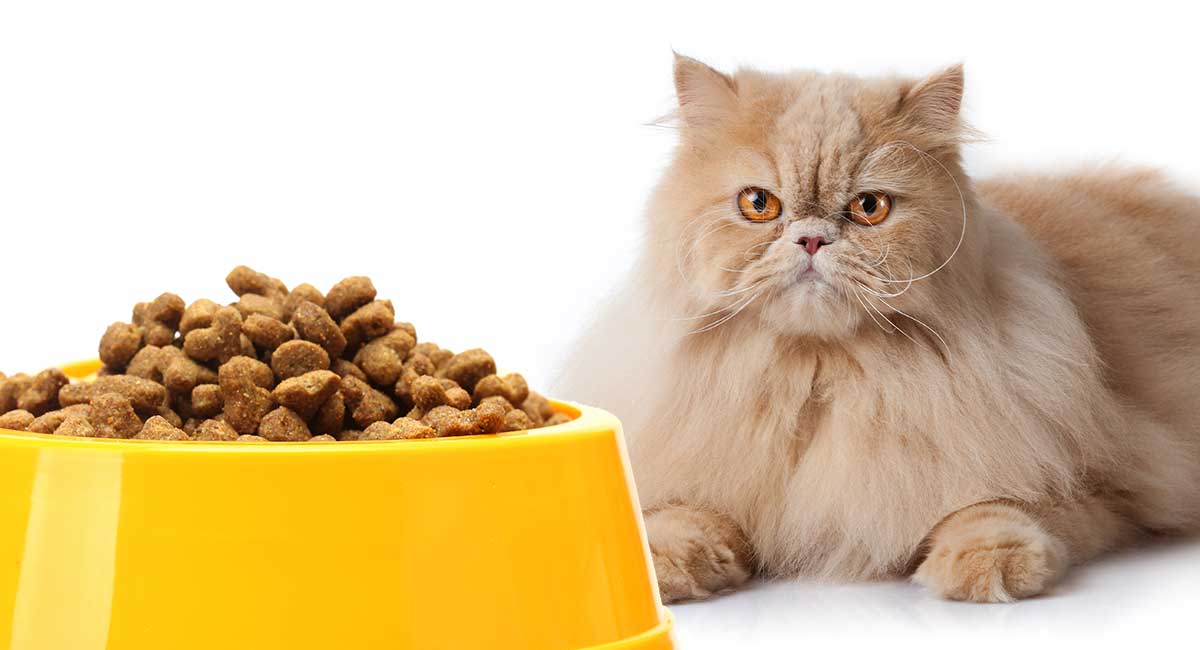
Feeding a Persian cat the best diet to manage their weight and overall health takes account of factors like:
- age
- face shape
- teeth
- and history of hairballs.
Feeding a Persian cat the right diet for their own unique needs supports their short term and long term well-being.
Products included in this article were carefully and independently selected by the Happy Cat Site team. If you decide to make a purchase from one of the links marked by an asterisk, we may earn a small commission on that sale. This is at no extra cost to you.
Feeding A Persian Cat
As a Persian owner, you know that your cat is special. However, does this singular breed require its own special kind of food?
How can you make sure that you're feeding your cat or kitten the best possible diet for the Persian breed?
Don't worry! Our Persian cat feeding guide will make it easy for you to determine what and how to feed your fluffy friend!
Let's start by looking at what makes the Persian so unique, and how these distinctive features can influence Persian cat care and feeding.
Persian Cat Physical Characteristics
The two most famous features of the Persian breed are its long, soft coat and flattened face.
First, that beautiful silky fur requires regular care to keep your Persian looking and feeling its best. In addition to daily combing, most Persians benefit from occasional baths and trimming of the fur on the rear end to keep them clean.
Secondly, that cute face with the big eyes and snub nose will also require extra care. Because of this, Persian owners wipe their cat's face to keep it clean, especially if it's a light color.
Does long fur and a flat face influence the feeding of a Persian cat? The answer is yes! The type of food you feed your cat can help control the hairballs that go along with long fur.
Flat faced cats can also be prone to dental problems, as we'll see in a bit, and therefore feeding becomes very important if your Persian has tooth issues.
First, let's look at feeding a Persian cat that's prone to hairballs.
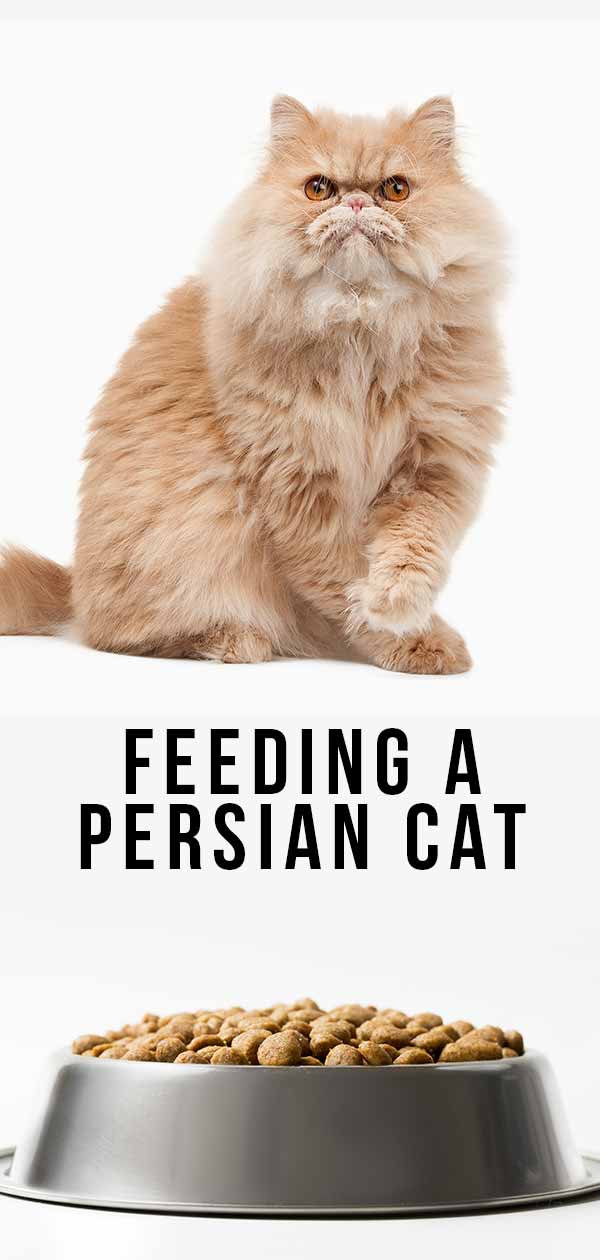
Hairball Control
Firstly, what are hairballs and why are they so common in cats, especially long-haired cats like the Persian?
Hairballs are clumps of undigested fur that accumulate in a cat's digestive system and are periodically spit up.
It's normal for your cat to swallow hair during self-grooming, however. The hair accumulates in the stomach until it is spit up or passed into the intestines.
Sometimes hairballs can become lodged in the intestines, causing a potentially dangerous blockage.
Unfortunately, hairballs are a fact of life, particularly with long haired cats.
Regular combing can help remove loose hair from your Persian's coat, and many owners also give their cats laxative pastes to encourage the passage of hairballs.
Hairball Control Diets For Persian Cats
Next, what about hairball control diets?
First, be sure to talk to your veterinarian about the use of laxative remedies and hairball control cat food (and treats) before you get started.
Once you get the all clear from your vet, you can introduce your cat to hairball control food.
What makes one cat food a better treatment for hairballs than another?
Most hairball control cat foods are high in protein, low in carbohydrates, and contain added fiber to help your cat pass hairballs through the digestive system.
However, since cats are obligate carnivores, a quality, high protein/low carb diet is the best option for cats, whether they have hairball issues or not.
Many veterinarians also note that a diet high in moisture content can also be beneficial for cats with hairballs.
Best Hairball Food For Persian Cats
Here are a few hairball control cat food options that are high protein/low carb and contain added fiber. Keep in mind that wet food has a higher moisture content than dry kibble.
Royal Canin Indoor Intense Hairball
Royal Canin's hairball formula* is designed for adult cats that are prone to hairballs.

Additionally, it contains psyllium and other dietary fibers to help your cat pass hairballs through the digestive tract.
Hill's Science Diet Wet Cat Food
This is a wet formula* that can be a good option if your cat is prone to both hairballs and urinary tract problems.

It contains beet pulp, which is a natural fiber often added to digestive health pet foods.
IAMS Proactive Weight and Hairball Care
Many hairball control formulas are also labeled for weight control and indoor cats.
How well do you know your cat? Discover the secret world of cats.
The Happy Cat Handbook - A unique guide to understanding and enjoying your cat!
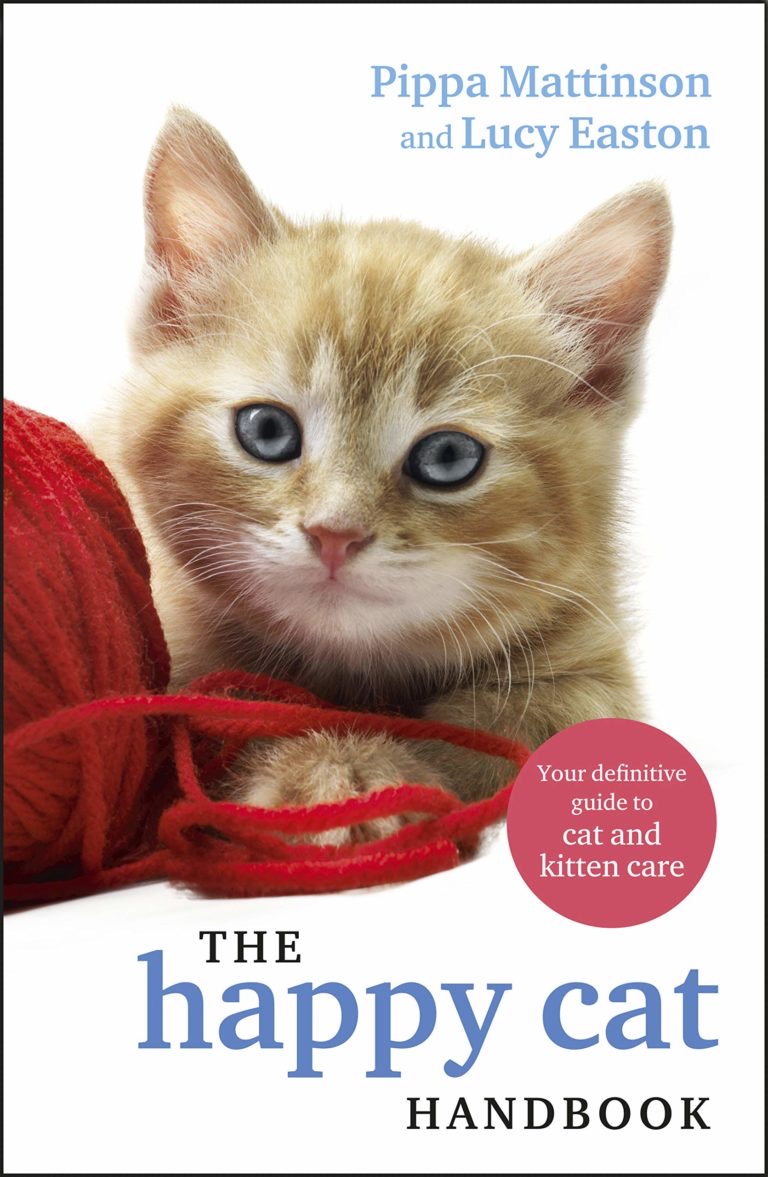

This IAMS formula*, similarly, contains beet pulp for fiber and is also high in protein, with less fat than regular cat food.
Persian Cats And Dental Health
As we mentioned earlier, flat faced cat breeds like the Persian and the Exotic Shorthair can be prone to dental problems which could negatively impact their eating habits.
One study of dental anomalies in these breeds found a wide range of problems, including misalignment and crowding of teeth, tooth resorption, gum disease, and abnormalities like extra or missing teeth.
Primarily, a good diet and regular tooth brushing can help prevent dental problems in Persian cats.
Feline health experts generally recommend cat foods that contains kibble with an abrasive texture to help prevent the formation of plaque and tartar. Additionally, your vet might also recommend food or treats that contain enzymes to help clean your cat's teeth.
However, what if your cat already has dental problems that are causing difficulty and discomfort during eating? While kibble may be a good preventive dental health diet, a cat with missing teeth or painful gums may be more comfortable eating softer food.
A cat that experiences pain while eating can also be at risk for malnutrition, therefore it's important to choose a food that is easy to eat, palatable, and nutritious. Meanwhile, senior diets can be a good option for cats with bad teeth.
Best Food For Persian Cats With Dental Problems
Some Persian cat owners may be looking for food to prevent dental issues, while others are seeking the best food for cats that already have dental problems.
First, let's look at preventive diets. Secondly, we'll check out some options for cats with chronic dental health issues.
Hill's Science Diet Oral Care
This is a dry food with kibble* that has a specially designed texture to clean your cat's teeth.

It can also help remove plaque and tartar.
Royal Canin Oral Sensitive Dry Cat Food
The kibble in this food* has a size, shape, and texture that encourages your cat to chew food slowly and thoroughly.

Giving it a tooth brushing effect.
IAMS Proactive Health Adult Cat Oral Care Dry Cat Food
This is also a preventive care kibble* that is designed to clean your cat's teeth.

The pieces are large and crunchy, with a shape that helps remove plaque and tartar.
Soft Food Options
Secondly, let's look at a few options for a Persian cat with tooth and gum problems that might make eating hard kibble challenging and uncomfortable.
Purina Fancy Feast Wet Cat Food
This is a canned food* that contains flavorful gravy and small delicate bites.

They are easy for cats with dental issues to eat.
Did you know that thousands of research papers have been published on cat behavior and health? No time to read them all? Don't worry - we've done it for you! And picked out the best bits! The Happy Cat Handbook - A unique guide to understanding and enjoying your cat!

Royal Canin Feline Health Nutrition Intense Beauty
This wet food formula* has thin slices in gravy which make it easy to eat.

It also contains omega fatty acids for a soft and shiny coat.
Blue Buffalo Wilderness Cat Food
A soft, easy to eat paté style cat food* that's high in protein, vitamins, and minerals.

Helping to ensure that your cat gets plenty of nutrition, even with tooth problems.
Other Options For Feeding A Persian Cat
Besides Persian-specific issues like hairball control and dental health, you might also want to investigate cat foods that address other concerns.
Many Persian owners are also interested in the best foods for different life stages (such as kitten or senior), as well as weight control cat food.
Let's take a brief look at these more general feeding options that can apply to many different cat breeds, including Persians.
Best Food For Kitten And Senior Persians
Many of the foods we've looked at are suitable for adults one year of age and older, but what about your new Persian kitten?
Kittens have specific nutritional requirements that are different from adult cats. They need the proper amounts of protein, fat, and calcium for healthy growth and development.
A senior cat's diet depends on its individual issues. For example, some seniors become overweight while others lose weight.
Your senior cat may also have some health issues like kidney disease that may require a special veterinary diet.
Here are a few options for kitten and senior Persian cats.
Best Options For Different Life Stages
At different stages of their life, your cat will benefit from having a different type of food.
Purina ONE Healthy Kitten Formula Dry Kitten Food
This is a high protein kitten food* that also contains a nutrient found in mother's milk called DHA.

This supports healthy development.
Hill's Science Diet Dry Cat Food, Kitten
This kitten formula* also contains DHA and high-quality protein.

As well as antioxidants for the immune system.
Blue Buffalo Healthy Aging
This is a senior cat formula* that supports a senior cat's overall health.
Including protein to maintain energy and muscles.
Royal Canin Aging 12+
An option for older seniors* that supports kidney and joint health.

It's also designed to stimulate the appetite of picky eaters that need to maintain their weight.
Best Food For Overweight Persian Cats
Your pampered Persian might be a few pounds over its ideal weight, a common problem in many cat breeds.
What should Persian owners look for in a weight control cat food?
Pet nutrition experts recommend a combination of diet and exercise for owners who want to get and keep their cats at a healthy weight.
You can transition your cat from a normal diet to a reduced calorie diet gradually, so your cat will accept the new food more easily.
Many overweight cats are accustomed to "grazing" on a bowl of dry food that's left out all day.
For weight loss, it's best to feed your cat three to four small meals a day and limit free access to food, whether it's for the cat or any other pets in the house!
Best Options For Weight Control
Because obesity can be a problem for so many cats, there's no shortage of options when it comes to choosing a weight control cat food for your Persian! Here are a few quality options.
Royal Canin Feline Indoor Light
This weight control formula* has 33% reduced fat content and fiber that helps keep your cat feeling full.

It also has L-carnitine, an amino acid that may be beneficial for weight control.
Hill's Science Diet Adult Light Dry Cat Food
This is another option that has fewer calories* than regular cat food.
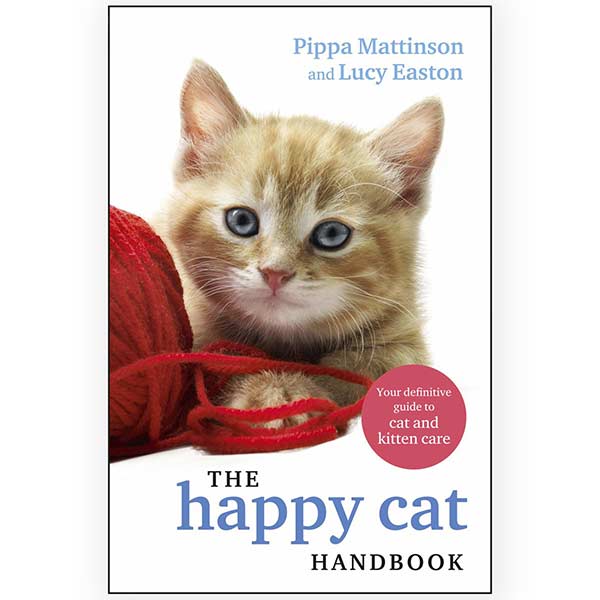

Plus fiber and L-carnitine for added weight control benefits.
Purina ONE Ideal Weight Canned
A wet food option* that contains real white meat chicken for healthy low-calorie protein.

As well as L-carnitine for additional weight control.
Feeding A Persian Cat
Breed can make a real difference when it comes to deciding what to feed your cat!
In the case of the Persian, that abundant long fur and flattened face can impact cat food choices. Hairball control and dental health diets can be beneficial for the Persian breed.
Your Persian's life stage will also influence your choices. From early kittenhood to adulthood to old age, you'll want to choose a healthy diet that's designed for the nutritional needs of your cat's age.
Maybe your Persian could stand to lose a few extra pounds…a common problem for many cats! A reduced calorie, weight control diet, fed in controlled portions and combined with exercise, can be just the remedy for an overweight Persian.
Choosing the right food can be confusing, so be sure to discuss any concerns you have about diet with your cat's veterinarian.
Here's to a long and healthy life for your fluffy feline companion!
Affiliate link disclosure: Links in this article marked with an * are affiliate links, and we may receive a small commission if you purchase these products. However, we selected them for inclusion independently, and all of the views expressed in this article are our own.
References And Resources
- The Danger of Hairballs. Cornell University College of Veterinary Medicine Feline Health Center.
- Waggener, N. How to Prevent and Treat Hairballs for Your Cat. South Boston Animal Hospital, 2018.
- Mestrinho, L.A., Louro, J.M., Gordo, I.S., et al. Oral and Dental Anomalies in Purebred, Brachycephalic Persian and Exotic Cats. Journal of the American Veterinary Medical Association, 2018.
- Linder, D.E. What are the Best Foods and Treats for My Pet's Dental Health? Clinical Nutrition Service, Cummings Veterinary Medical Center at Tufts University, 2016.
- Plotnick, A. Tooth or Consequences. Manhattan Cat Specialists.
- Downing, R. Feeding Growing Kittens. VCA Hospitals, 2013.
- The Special Needs of the Senior Cat. Cornell University College of Veterinary Medicine Feline Health Center, 2016.
- Weight Loss for Cats. Kern Road Veterinary Clinic.
Your Amazing Cat!
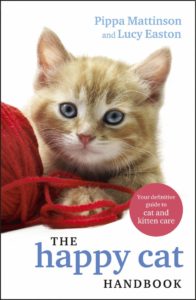
We are so excited to share our new book with you!
If you have enjoyed your visit to The Happy Cat Site we think you'll love The Happy Cat Handbook.
Written by the founders of this website including the author of the hugely successful Happy Puppy Handbook, it's packed with cat care information and fascinating cat facts.
Grab your copy today!
Source: https://www.thehappycatsite.com/feeding-a-persian-cat/
0 Response to "How Many Times Should We Feed Persian Cats"
Post a Comment